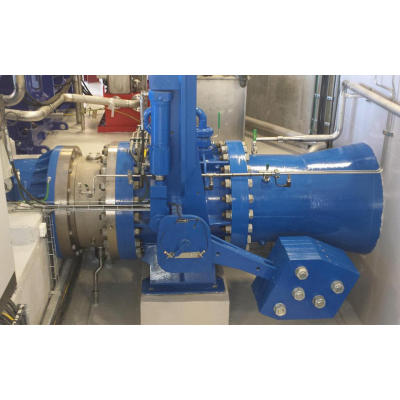Project Case
What are the valves used in Belgian hydropower stations

As an important energy production facility, the operation efficiency and safety of hydropower stations largely depend on the performance and reliability of various valves. There are many kinds of valves in hydropower stations, and each valve has its specific function and application scenario. The following are some commonly used valve types in hydropower stations and their roles:
1. Butterfly valve
Butterfly valve is a kind of valve with simple structure, light weight and easy operation. It is widely used in turbine inlet, cooling water system and drainage system of hydropower station. The butterfly valve controls the flow of fluid by rotating the disc, and has the advantages of small flow resistance, fast opening and closing speed, and good sealing performance.
2. Gate valve
Gate valve is a valve that controls fluid flow by lifting the gate plate, which is characterized by small flow resistance when it is fully opened, and is suitable for occasions where high flow rate and low resistance are required. Gate valves in hydropower stations are often used in turbine inlet, main water supply pipeline, drainage pipeline, etc. The gate valve has good sealing performance and is suitable for medium and high pressure system.
3. Ball valve
The ball valve controls the flow of fluid by rotating the ball, and has the advantages of simple structure, small operating torque and good sealing performance. Ball valves are widely used in various systems of hydropower stations, such as cooling water systems, lubricating oil systems, fire fighting systems, etc. The full diameter design of the ball valve makes it excellent in situations requiring large flow rates and low resistance.
4. Check valve
Check valves are used to prevent fluid backflow and protect turbines and piping systems from countercurrent shocks. The check valve in hydropower station is usually installed in the turbine outlet, pressure steel pipe, drainage pipe and other positions. Check valves are simple in structure, but vital in preventing water hammer and protecting equipment.
5. Pressure reducing valve
Pressure reducing valves are used to reduce high pressure fluids to the required working pressure, protecting downstream equipment and pipelines from excessive pressure shock. Pressure reducing valve in hydropower station is often used in high pressure water supply system, cooling water system and so on. The automatic adjustment function of the pressure reducing valve ensures the stability of the system pressure.
6. Safety valve
Safety valves are used to automatically relieve pressure when the system pressure exceeds the set value, protecting equipment and piping system from overpressure damage. Safety valves in hydropower stations are usually installed in pressure vessels, high-pressure pipelines and other positions. The reliability and accuracy of the safety valve are crucial to the safety of the system.
7. Regulating valve
Regulator valves are used to precisely control the flow, pressure, and temperature of fluids and are often used in systems that require fine regulation. Regulating valves in hydropower stations are often used in cooling water systems, lubricating oil systems, pressure steel pipes and so on. The sensitivity and accuracy of the regulator are crucial to the stable operation of the system.
8. Trap
Traps are used to remove condensate and air from the system to prevent moisture and corrosion of pipes and equipment. The steam trap in the hydropower station is usually installed in the steam system, cooling water system and so on. The performance of the trap directly affects the efficiency and life of the system.
There are various types of valves in hydropower stations, and each valve has its specific function and application scenario. Butterfly valves, gate valves, ball valves, check valves, pressure reducing valves, safety valves, regulating valves and traps play a key role in hydropower stations to ensure the safe and efficient operation of hydropower stations. The selection of appropriate valve types and performance parameters is very important for the stable operation of hydropower stations.
